Louisiana’s small- and mid-sized businesses (SMBs) are the backbone of the state’s vibrant economy: from the petrochemical service firms clustered along the Mississippi River to the family-owned restaurants that give New Orleans its unmatched flavor. Yet every year more of these businesses discover that a single ransomware incident, credential-stuffing attack, or disgruntled ex-employee can do as much damage as the worst hurricane. Traditional perimeter security—firewalls at the office edge, VPN tunnels for traveling staff, a stack of antivirus licenses—no longer keeps adversaries out or sensitive data in.
That reality is why Zero Trust Architecture (ZTA) has moved from an ambitious federal mandate to a practical framework that even the smallest Gulf Coast company can—and should—adopt. This in-depth guide explains what Zero Trust really means, why it fits Louisiana’s regulatory and natural-disaster landscape, how to start without blowing the budget, and where a local managed IT partner can accelerate the journey.
The Heart of Zero Trust: “Never Trust, Always Verify”
Zero Trust is often pitched as a single product, but it is really a security mindset: every identity, every device, every application must prove it belongs—continuously. The idea was formalized in NIST Special Publication 800-207 and reinforced by 2021’s federal cybersecurity executive order, yet its principles date back to core computer-science notions of least privilege and segmentation.
In practice, Zero Trust introduces several non-negotiables:
- Explicit identity verification. Users, service accounts, and even IoT sensors must authenticate with strong, phishing-resistant credentials—think hardware security keys, certificate-based auth, or FIDO2 tokens.
- Strict access control based on context. An engineer connecting from a patched laptop inside a Baton Rouge site at 10 a.m. may be approved, but the same account logging in at midnight from an unfamiliar IP will face extra scrutiny or outright denial.
- Microsegmentation and software-defined perimeters (SDP). Flat networks are replaced with granular zones, each governed by software policies that follow workloads across clouds and data centers.
- Continuous monitoring and automatic response. Security analytics platforms collect telemetry everywhere—identity logs, endpoint agents, SaaS APIs—and quarantine or isolate suspicious activity within seconds.
Because trust is never assumed, a compromised password or rogue insider cannot pivot freely across the environment. For SMBs that lack sprawling SOC teams, that built-in containment is a lifesaver.
Why Zero Trust Hits Home for Louisiana Businesses
The same forces reshaping global cybersecurity are amplified along the Gulf Coast:
Ransomware at the Parish Level. Louisiana’s public-sector breaches—such as the 2019 attacks that forced emergency declarations in several parishes—demonstrated that threat actors target smaller networks with budgets in the low six figures. Criminal gangs know local firms keep cashflow records, oilfield schematics, and tourist data worth extorting.
Frequent Disasters and Remote Work. Hurricane Ida in 2021 and countless tropical storms before and after proved that employees may be displaced for weeks, relying on hotel Wi-Fi or cellular hotspots. A Zero Trust model enforces the same security posture whether a controller logs in from Terrebonne Parish or a FEMA trailer in Houston.
Regulatory Pressure. The Louisiana Database Security Breach Notification Law mandates disclosure within sixty days of discovering a breach of personal information. Healthcare, hospitality, and credit-card-handling retailers must also juggle HIPAA, PCI-DSS, and in some cases CJIS. Zero Trust controls such as least-privilege access, immutable audit logs, and strong encryption satisfy overlapping requirements without bolt-on tools.
Supply-Chain Interdependence. A seafood processor in Plaquemines Parish shares cloud-based inventory portals with Gulf shipping partners; a local SaaS developer integrates with national payment platforms. One weak link can expose them all. Zero Trust’s micro-segmentation keeps third-party integrations tightly scoped.
Key Pillars Every Louisiana SMB Should Prioritize
Identity, Credential, and Access Management (ICAM).
Roll out single sign-on backed by multi-factor authentication everywhere—cloud apps, legacy file shares, command-line access for developers. Hardware FIDO tokens or mobile push MFA cost a few dollars per user per month yet stop the majority of credential attacks that plague hospitality point-of-sale systems each Mardi Gras.
Endpoint Security with Health Attestation.
Zero Trust mandates that a device prove not only who it belongs to but also that it is patched, has disk encryption turned on, and is free of high-severity malware. Modern endpoint detection and response (EDR) tools integrate posture checks directly into the access decision.
Network and Microsegmentation.
Replace flat LANs with VLANs, cloud security groups, or software-defined overlays. For a Houma manufacturing shop, that could mean segregating operational-technology (OT) PLCs from office desktops. A jump-server pattern guarded by just-in-time access prevents direct RDP exposure—a favorite avenue for ransomware crews.
Data Security and Visibility.
Classify data (public, internal, confidential, regulated) and tie encryption and sharing controls to those labels. Modern cloud access security brokers (CASBs) and data loss prevention (DLP) gateways can inspect Office 365, Google Workspace, or Box traffic without slowing down accountants during tax season.
Continuous Monitoring and Automation.
Whether your logs feed a full SIEM or a lightweight extended detection and response (XDR) console, the goal is the same: ingest identity events, endpoint alerts, DNS queries, and cloud API calls, then let analytics define a real-time “risk score.” Automated playbooks can isolate a laptop that suddenly starts beaconing to a Tor exit node—a telltale sign of double-extortion ransomware.
A Practical Roadmap for a 50- to 200-Employee Business
Map Your Protect Surface.
Forget boiling the ocean; start by listing the data, applications, assets, and services that would halt operations if compromised. For a Lafourche Parish ship-builder, CAD drawings and ERP databases might top the list.
Document Transaction Flows.
Sketch how users and devices access those crown jewels today. This step often reveals permissions long forgotten, such as a third-party payroll vendor that still maintains VPN credentials.
Design Micro-Perimeters.
Place enforcement points—next-gen firewalls, identity-aware proxies, or host-based segment controls—directly in front of each protect surface. The zone may be as small as a single S3 bucket in AWS or as large as an on-prem SQL cluster.
Define Stateful Policy.
Use “who, what, when, where, why” logic rather than static IP rules: Marketing-App-Service may connect to CRM-Database only if the call originates from the production namespace and the service certificate is valid.
Enforce and Monitor.
Roll policies to a test group first, often the IT department itself, then expand. Log every decision. Tune where legitimate workflows break—inevitable but solvable.
Iterate.
Zero Trust is a cycle, not a sprint. Conduct quarterly tabletop exercises, especially before hurricane season, to rehearse scenarios such as “office flooded, staff working from backup site,” ensuring policies still allow essential access.
Quick Wins That Stripe Reasonable Budgets
- Turn on MFA across every cloud portal. Most SaaS suites now offer built-in free MFA.
- Enable conditional access by location. Block logins from geographies where you do no business.
- Stop sharing admin accounts. Issue individual privileged identities and require check-in / check-out through a password vault.
- Replace legacy VPN with Zero Trust Network Access (ZTNA). Browser-based connectors reduce attack surface and ease user adoption.
- Patch ruthlessly. Ninety-plus percent of exploited vulnerabilities have patches older than a year; automate OS and application updates.
Budgeting and Return on Investment
SMBs sometimes assume Zero Trust means six-figure invoices. In reality:
- Lower breach costs. Data breaches now average well over $200 per record for small organizations, exclusive of downtime.
- Reduced cyber-insurance premiums. Underwriters increasingly demand proof of MFA, privileged-access controls, and incident-response plans—all hallmarks of Zero Trust.
- Operational simplicity. Consolidating VPN, DLP, and endpoint licenses into a unified Secure Access Service Edge (SASE) platform can offset new spending.
- Downtime avoidance during storms. Zero Trust’s cloud-centric controls keep systems accessible yet secure when offices lose power.
Choosing Tools Without Drowning in Buzzwords
A modern Zero Trust stack for an SMB might include:
- Identity Platform: Azure AD, Okta, or even JumpCloud for tightly-integrated MFA and SSO.
- Endpoint Protection: CrowdStrike, Microsoft Defender for Business, SentinelOne, or Sophos Intercept X.
- ZTNA Gateway: Cloudflare Access, Cisco Duo Secure Access, or Netskope Private Access.
- Visibility/SIEM: Microsoft Sentinel, Elastic Security, or a managed SOC with Splunk LavinOps.
- Microsegmentation: VMware NSX, Illumio Core, or lightweight host-based firewalls orchestrated by Ansible.
The key is tight integration: identity feeds need to talk to network decisions, which need to surface in analytics dashboards—all without requiring an in-house PhD to keep running.
Common Pitfalls and Misconceptions
- “Zero Trust means zero-touch.” False. You will still maintain patches, incident-response playbooks, and user awareness training.
- “We’re too small to be a target.” Threat actors automate everything. If you accept ACH payments, you are on the radar.
- “Firewalls are obsolete.” Perimeter firewalls still block commodity scans and DDoS floods; Zero Trust simply uses them surgically instead of as the sole defense.
- “It’s impossible to roll out without breaking workflows.” Phased deployment, business-unit pilots, and robust communication keep disruptions minimal.
How a New Orleans Managed IT Partner Adds Value
Local Threat Intelligence. A provider that monitors Gulf Coast networks sees malware trends hitting regional industries first, such as boating-marina POS trojans surfacing ahead of Jazz Fest tourist influx.
24 × 7 SOC and Incident Response. Most SMBs cannot staff a night shift. A managed SOC isolates an infected Metairie sales laptop at 2 a.m. before ransomware spreads.
Disaster Preparedness. Experienced MSPs stage cloud-based failover environments ready to spin up when the next Category 4 storm knocks out on-prem servers in St. Charles Parish.
Regulatory Guidance. An MSP fluent in Louisiana Revised Statutes, HIPAA audits, and PCI reporting helps map Zero Trust controls directly to compliance evidence, saving owners from legal headaches.
User Training and Culture Change. Even the best architecture fails when employees prop open security doors. Regular, localized phishing simulations—“Click here for free Jazz Fest tickets!”—build a vigilant workforce.
A Day-in-the-Life Scenario
Picture Crescent City Custom Millworks, a 120-employee manufacturer exporting reclaimed cypress doors worldwide.
Pre-Zero Trust: Office PCs and CNC machines share one flat subnet. An engineer reuses a weak password on a design forum; attackers log in via the VPN and exfiltrate AutoCAD files, demanding $500,000.
Zero Trust Journey:
- The plant deploys identity-aware ZTNA; VPN is sunset.
- CAD files are moved to a segmented NAS accessible only via authenticated, patched engineering workstations.
- Endpoint agents enforce screen-lock and full-disk encryption.
- A managed SIEM ingests logs from firewalls, Office 365, and OT sensors, triggering alerts when anomalous protocols cross zones.
Outcome: Six months later, during hurricane prep, most employees work from home. A finance clerk clicks a malicious attachment, but EDR isolates the device; lateral movement is impossible because finance tools live in their own micro-segment. Payroll runs, shipments leave the Port of New Orleans on time, and the breach costs nothing beyond rebuilding one laptop.
Next Steps for Louisiana SMB Leaders
- Identify a business-critical asset to protect first. Maybe it’s the guest reservation database, the SCADA historian, or the law firm’s document management system.
- Schedule a Zero Trust readiness assessment. A reputable New Orleans MSP will map gaps and propose a phased plan within weeks.
- Mandate strong MFA for every user by a firm date. Culture change is easier when non-negotiable.
- Pilot ZTNA for remote users before hurricane season. Iron out kinks while the sun shines.
- Budget for ongoing monitoring, not a one-off project. Zero Trust success is measured by mean time to detect and contain, not by a finished checklist.
The Bottom Line
Zero Trust is not a silver bullet, a single appliance, or a luxury reserved for Fortune 500 giants. It is a pragmatic, repeatable approach to security that lines up perfectly with the realities of doing business in Louisiana: harsh weather, tight-knit supply chains, and a tourism-driven endpoint sprawl that never sleeps. By focusing on identity, segmentation, continuous verification, and automated response—and by leaning on a trusted local managed service provider—Louisiana’s SMBs can protect their data, their reputations, and their communities from the next wave of cyber threats, come rain or shine.


